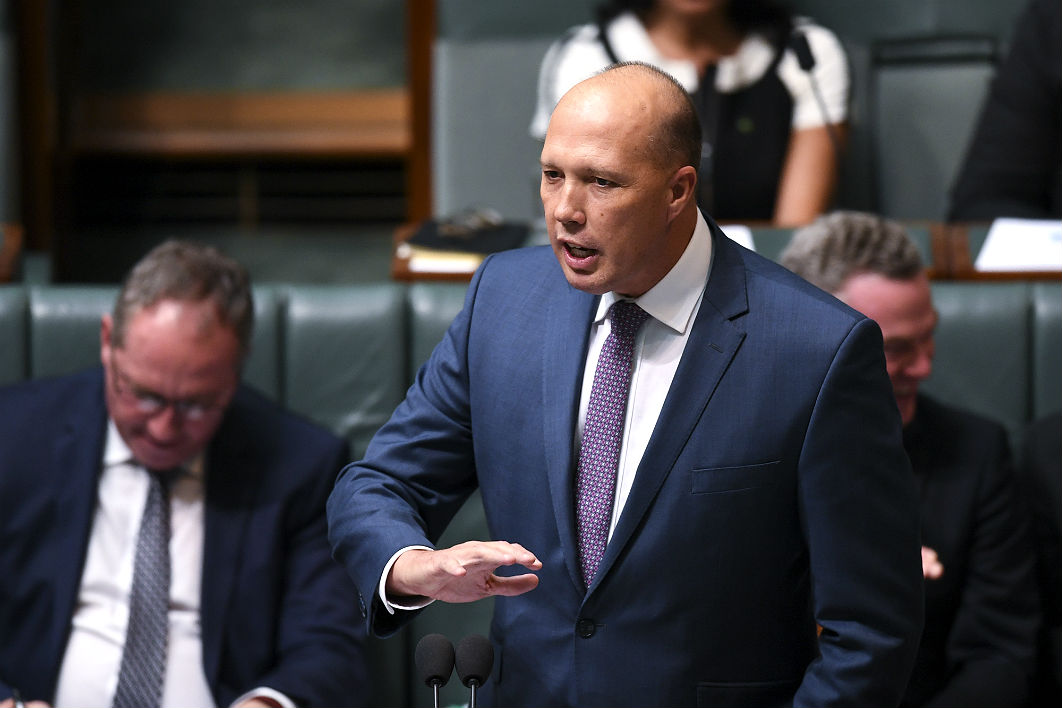20 FEBRUARY 2018
"Drastically reducing net migration would be neither easy nor wise, says a former senior official"
Yet, despite our long immigration tradition, Australia’s immigration debate is tortured and surprisingly poorly informed. Until very recently, this was not helped by the Turnbull government’s eerie silence on immigration levels and population policy. Immigration minister Peter Dutton’s tentative foray late last week should therefore be welcomed.
Given the complexities, immigration ministers have an obligation to be accurate with the data and honest about the range of issues to be considered in significantly reducing the intake. Dutton was neither. He said that the Coalition had already “considerably” reduced the number of people entering Australia — by 100,000 compared with when Labor was in government. “It’s come back considerably,” he went on, “and if we have to bring it back further, if that’s what [is] required and that’s what’s in our country’s best interests… that is what we will do.”
"The minister would know very well that governments can no longer simply turn migration on or off like a tap."
If the minister was referring to the size of the migration and humanitarian programs, then his department’s website shows he was wrong — these programs have not been reduced by 100,000. Indeed, the Coalition has maintained the migration program at near record levels (around 190,000 per annum) for a number of years. Humanitarian numbers for 2016–17 are likely to have been among the highest in our history.
He was more likely referring to the level of net migration: arrivals minus departures. But even here his statement is misleading. Net migration began rising rapidly during the latter years of the Howard government. Because it takes a number of years to adjust immigration levels, that momentum carried forward into the first years of the Rudd government. Net migration peaked in 2008–09 at 299,870 (with the increases driven mostly by overseas students) but fell significantly to 180,370 in 2010–11 and 229,410 in 2011–12. Since then, net migration has averaged around 206,000 per annum.
More significantly, however, net migration reached 245,400 in 2016–17, an increase of over 50,000 on 2015–16. This was one of the largest single-year increases in Australia’s history. Once again, it was driven largely by a surge in overseas students. As the economy strengthens, net migration may rise further and — if current policy settings are maintained — it could well reach the record levels of 2008–09.
Peter Dutton also said there may be a case for cutting immigration to reduce pressure on infrastructure. To have any real impact, though, the cut would need to be very large indeed, and would need to be sustained for many years. The minister would know very well that governments can no longer simply turn migration on or off like a tap.
In theory, recent changes by the Turnbull government — replacing the 457 skilled temporary entry visa with a more restrictive visa, and increasing taxes on working holiday-makers — should reduce migration. Yet 2016–17 still saw an increase of 50,000, and we will possibly see even more in 2017–18 as the economy strengthens and universities seek to offset the impact of funding cuts with more revenue from overseas students.
These increases are taking place while the formal migration and humanitarian programs remain largely unchanged. To understand why, we need to be aware that even when numbers in those programs are held constant, according to the department’s figures, the level of net migration reported by the Australian Bureau of Statistics can fluctuate significantly. The department simply counts the number of permanent resident visas issued (including to people already in Australia); the ABS counts both permanent and long-term arrivals and deducts departures.
The government doesn’t cap most of the numbers that make up net migration, including the arrival and departure of Australian and NZ citizens, overseas students and skilled temporary entrants. It leaves these categories open for good reason — they are driven by the short-term needs of the labour market (though overall government policy also reflects lobbying and other pressures).
In the eight years to 2008–09, for example, net migration surged from about 100,000 to 300,000 a year. The strength of the labour market and growing concerns about a declining fertility rate led to new policies designed to accelerate the arrival of skilled and semi-skilled workers and overseas students.
FOR FULL STORY PLEASE CLICK THE LINK BELOW:
insidestory.org.au/putting-the-numbers-back-into-the-immigration-debate/


 RSS Feed
RSS Feed